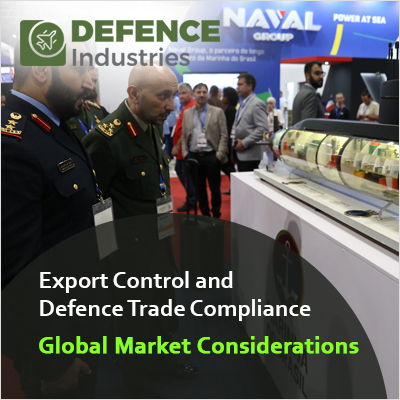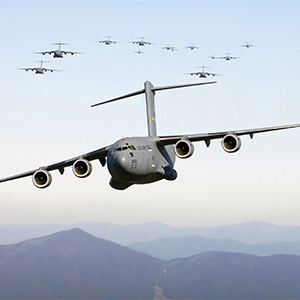Export Control and Defence Trade Compliance: Global Market Considerations 25 June 2024

Introduction:
In the realm of international trade, particularly within the defence and security sectors, stringent regulations govern the export of goods and technologies with potential national security implications. Export control and defence trade compliance play pivotal roles in ensuring the responsible and secure transfer of such items across borders. In this article, we delve deeper into the nuances of these regulations, focusing on their global implications for businesses operating in the defence market.
International Regulatory Frameworks
a. ITAR (International Traffic in Arms Regulations)
ITAR, administered by the United States Department of State, establishes controls over the export and import of defence-related articles and services listed on the United States Munitions List (USML). The exhaustive nature of this list encompasses a wide array of items, from firearms to military aircraft.
b. EAR (Export Administration Regulations)
In parallel, the U.S. Department of Commerce oversees EAR, a regulatory framework that manages the export of dual-use items—products and technologies with both civilian and military applications. The intricate classification process under EAR ensures that items are appropriately identified based on their sensitivity.
Dual-Use Items: A Complex Landscape
The concept of dual-use items adds a layer of complexity to compliance efforts. These items, straddling the line between civilian and military utility, demand heightened scrutiny. As a result, companies must navigate intricate regulatory pathways to ensure that these items are transferred responsibly.
Licensing Rigors
Procuring licenses is a central aspect of compliance in the defence trade. Obtaining the necessary approvals involves a meticulous process wherein exporters must demonstrate not only their commitment to regulatory adherence but also the alignment of the intended use with national security interests.
Global Compliance Considerations
Operating in the global defence market necessitates a keen awareness of diverse international regulations. Beyond the U.S., various countries impose their own sets of controls and requirements. A thorough understanding of these diverse legal landscapes is crucial to avoid inadvertent violations and legal entanglements.
Technology Transfer Challenges
The transfer of defence-related technologies requires a delicate balance between collaboration and safeguarding sensitive information. Joint ventures, collaborations, and technology transfers demand careful evaluation to prevent the unauthorized acquisition of critical defence capabilities.
Record-Keeping: A Pillar of Compliance
Robust record-keeping emerges as a cornerstone of compliance programs. Accurate documentation of transactions, licenses, and communications not only facilitates smooth audits but also serves as a testament to a company's commitment to transparency and regulatory adherence.
Consequences of Non-Compliance
The penalties for non-compliance are severe and multifaceted. Fines, imprisonment, loss of contracts, and reputational damage loom large for companies found in violation of export control and defence trade regulations.
Adapting to Regulatory Changes
In the ever-evolving landscape of international trade, export control regulations undergo periodic changes. Companies must stay proactive, regularly updating their compliance programs to align with the latest regulatory developments.
Global Security Dynamics
Beyond the regulatory framework, businesses must stay attuned to global security concerns. Emerging geopolitical challenges, regional tensions, and evolving threats necessitate a dynamic approach to compliance that goes beyond a static set of regulations.
Conclusion
In conclusion, export control and defence trade compliance are not merely regulatory obligations; they are strategic imperatives for companies navigating the complex global defence market. The interplay of international regulations, the challenges posed by dual-use items, and the need for rigorous compliance programs underscore the importance of a comprehensive and adaptive approach to ensure the responsible and secure flow of defence-related goods and technologies across borders.








